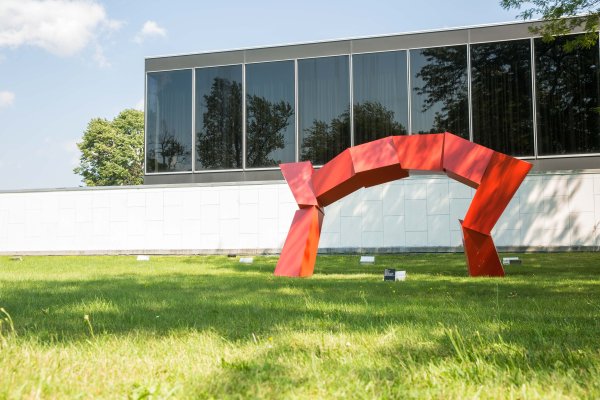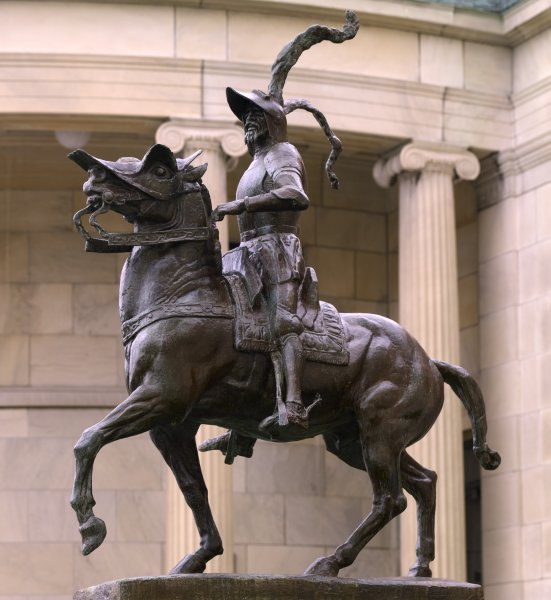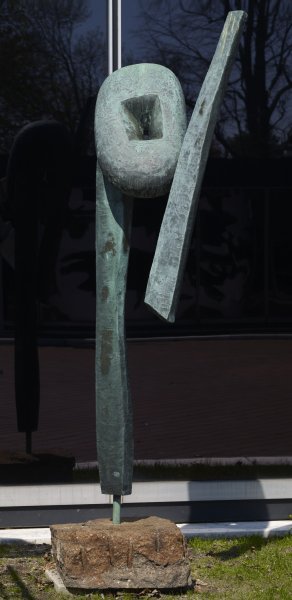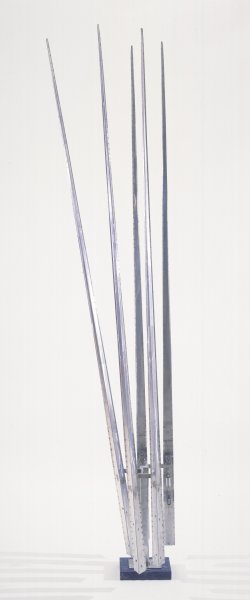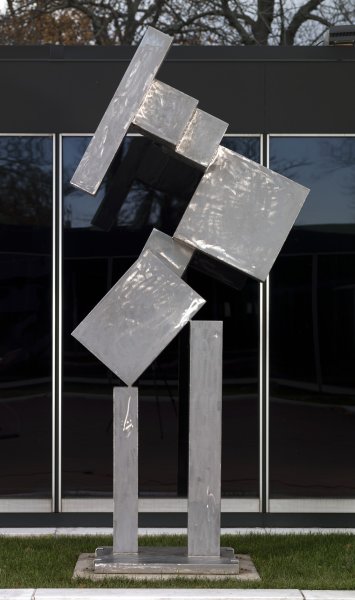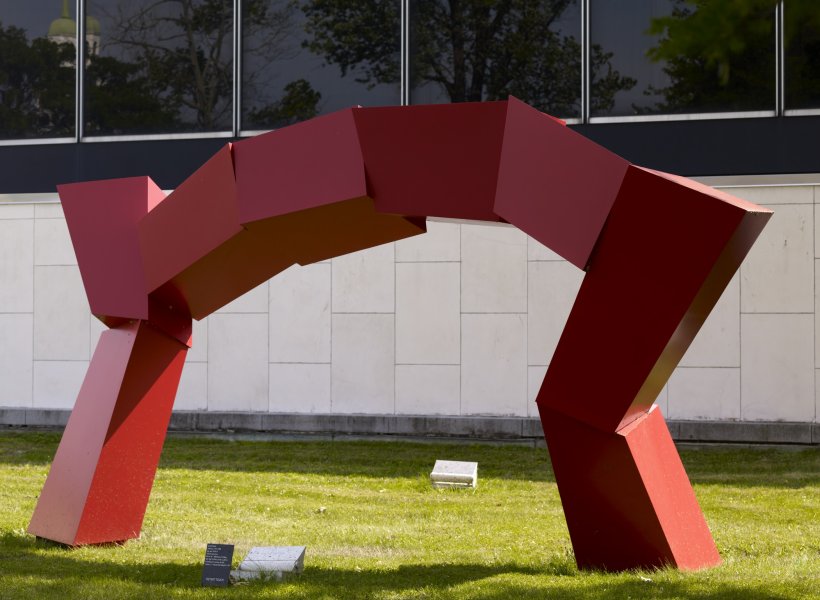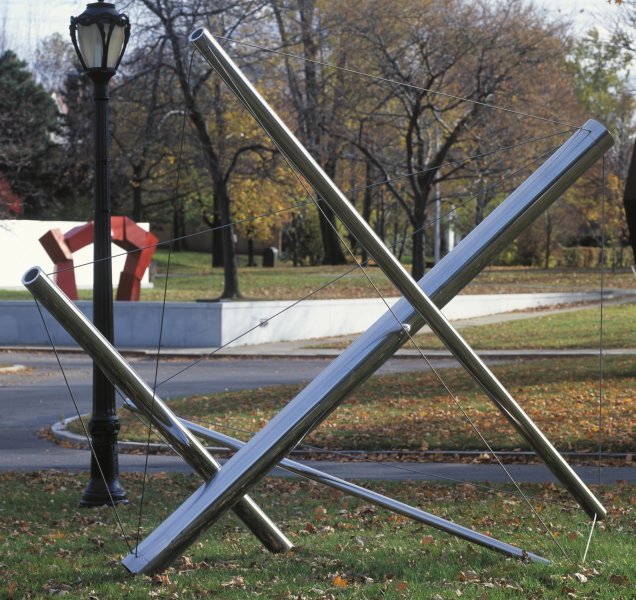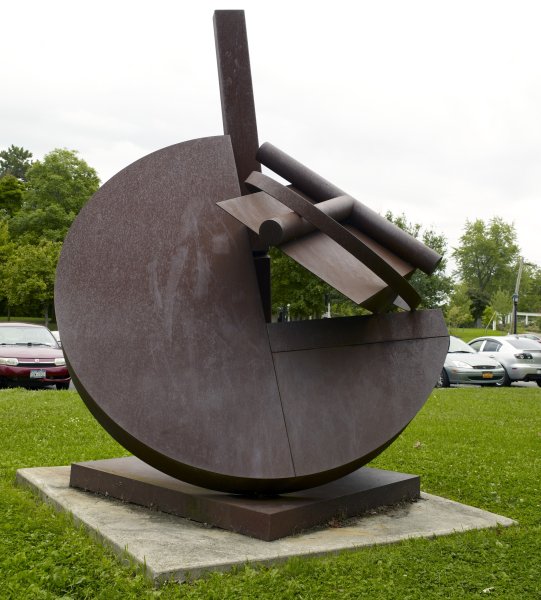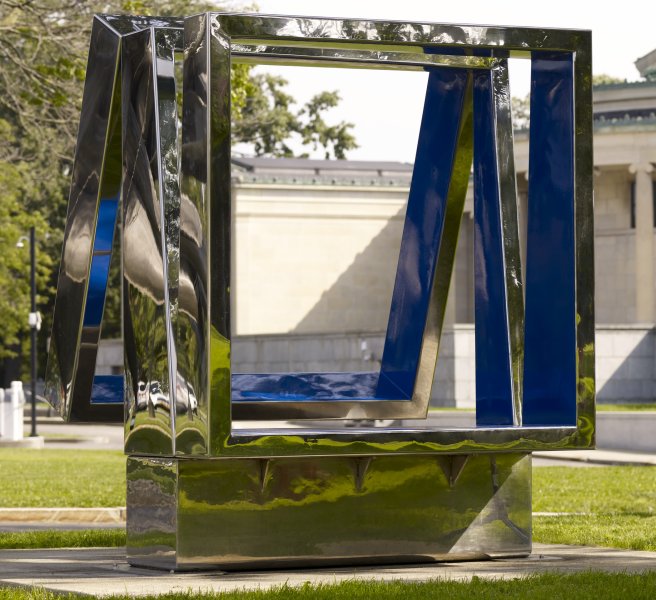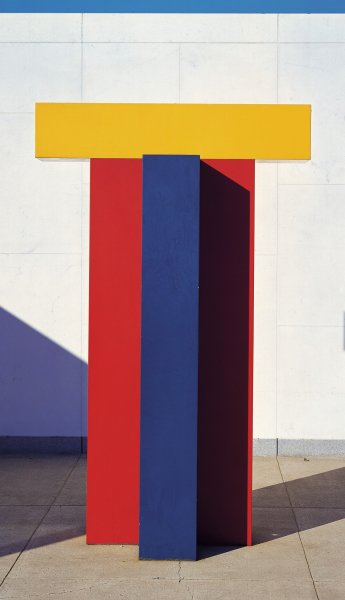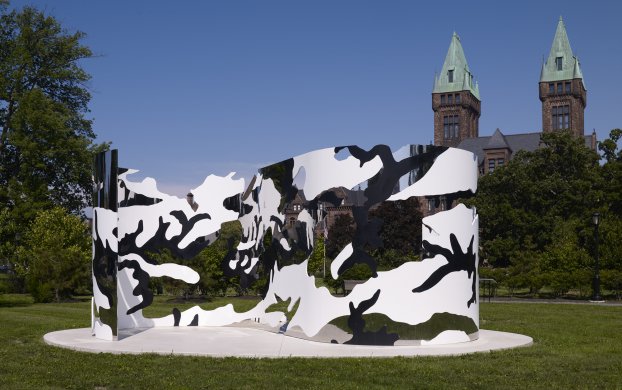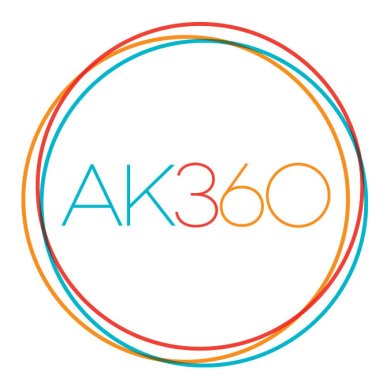You might have noticed some recent changes around the Albright-Knox’s campus. In preparation for our AK360 Campus Development and Expansion Project, many of the sculptures outside the museum are moving to secure locations. Godin-Spaulding Curator & Curator for the Collection Holly E. Hughes and Senior Registrar for the Collection Laura Fleischmann provide a deeper look into the process of moving, protecting, and conserving.
What has been going on with the museum campus?
Laura: We are deinstalling and packing the smaller outdoor sculptures on the Elmwood lawn and in the Sculpture Garden, and one work on the Delaware Park side. We are doing this in anticipation of AK360, getting a head start on things before the snow starts flying. We have major sculptures to deinstall in the spring and summer of 2019, as we get closer to groundbreaking, that will require far more planning and time management. So taking care of the smaller sculptures first makes sense.
Holly: While we are anticipating breaking ground on our construction project by early fall next year, we are also still actively installing exhibitions and doing all of the other things that are involved in being an art museum. So in addition to environmental factors like the changing seasons, we are also constrained by the day-to-day demands of operation.
Laura: Not to mention manpower. Like all organizations, there are limits to our capabilities!
Is it just Albright-Knox staff who are deinstalling these sculptures?
Laura: We do have some staff who will be hands-on, and I am overseeing it, but this move is being managed by an outside contractor who specializes in handling large-scale artwork.
Holly: Laura, besides the sculptures that were installed around the campus, how many objects would you estimate we need to move in preparation for construction?
Laura: Well, including all of our works on paper, roughly 300 artworks on view, and the artworks stored in vaults, I would say roughly 4,500 individual objects. The sculpture move is really just the first visible part of our preparations; in fact, my team and I have been moving artworks for almost a year already.
Why have you been doing all of this now when it is still relatively early on in the approvals and design development processes?
Holly: There is just no way to do a project as massive as AK360 without planning ahead like this.
Laura: Exactly. Though it may seem to some like we are jumping the gun a bit, the work we have been doing is actually not that far ahead of construction. Having been through three construction projects here and understanding the way these things typically work, I can tell you that once things start happening, they happen very quickly. We need to be responsible and prepared in order to be able to pack, protect, and transport the works safely, and not in a rushed, hectic manner.
Holly: It is far more cost effective to do something like this slowly and methodically.
Laura: Otherwise, if we only gave ourselves, say, three months to move everything, it would cost much, much more to bring in specialists from across the country on such short notice.
What is happening to these sculptures? They are going to come back, right?
Laura: We do not yet have the final designs and plans for the grounds, and so we cannot say with certainty which works will be placed where. I would anticipate that you will see many familiar sculptures, but probably in different locations, around the campus when AK360 is complete.
Holly: This is part of a larger conversation that is happening among the curators and with the artists and their estates. Some of the sculptures were constructed with specific locations in mind, and we need to be careful that we respect the wishes and intent of the artists.
Have you thought about installing these sculptures in other locations around Western New York during construction? The Albright-Knox recently installed Jim Hodges’s look and see on the Richardson Olmsted Campus, for instance.
Holly: We are really excited about the possibility of working with other institutions to share these sculptures with the city. It is important to remember, though, that installing artworks like these is not as simple as just picking them up with a crane and putting them someplace else.
Laura: For instance, in order for a sculpture like look and see to not sink into the ground, we have to put down a concrete pad. You have to dig a big hole down to a certain depth, put in rebar, put in concrete, and it is an engineered project with blueprints and everything.
Can we talk about cleaning and maintenance? Have you decided what the museum might do to conserve these sculptures?
Holly: As the artworks leave, Laura and her team of registrars will assess them and prioritize those that need some TLC.
Laura: This whole process gives us an opportunity to do a full assessment and really figure out which of them need real attention during their little siesta.
